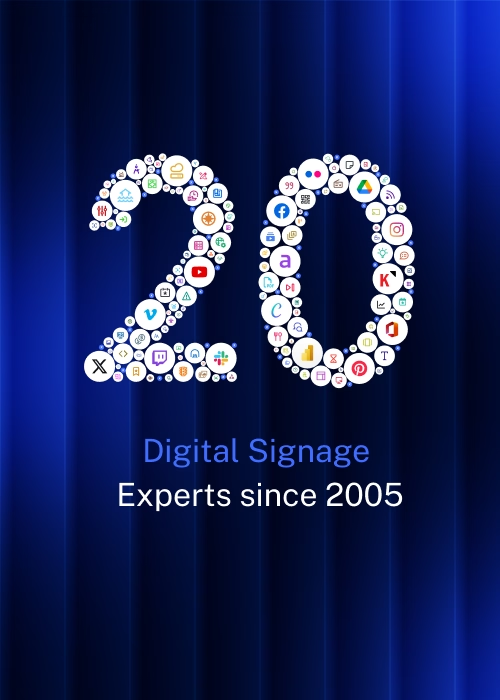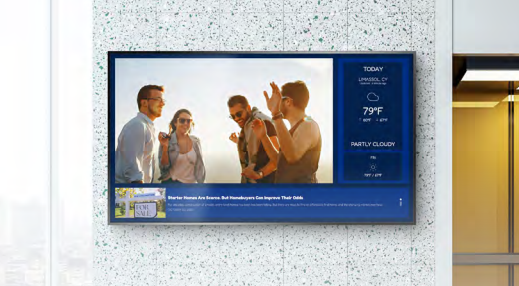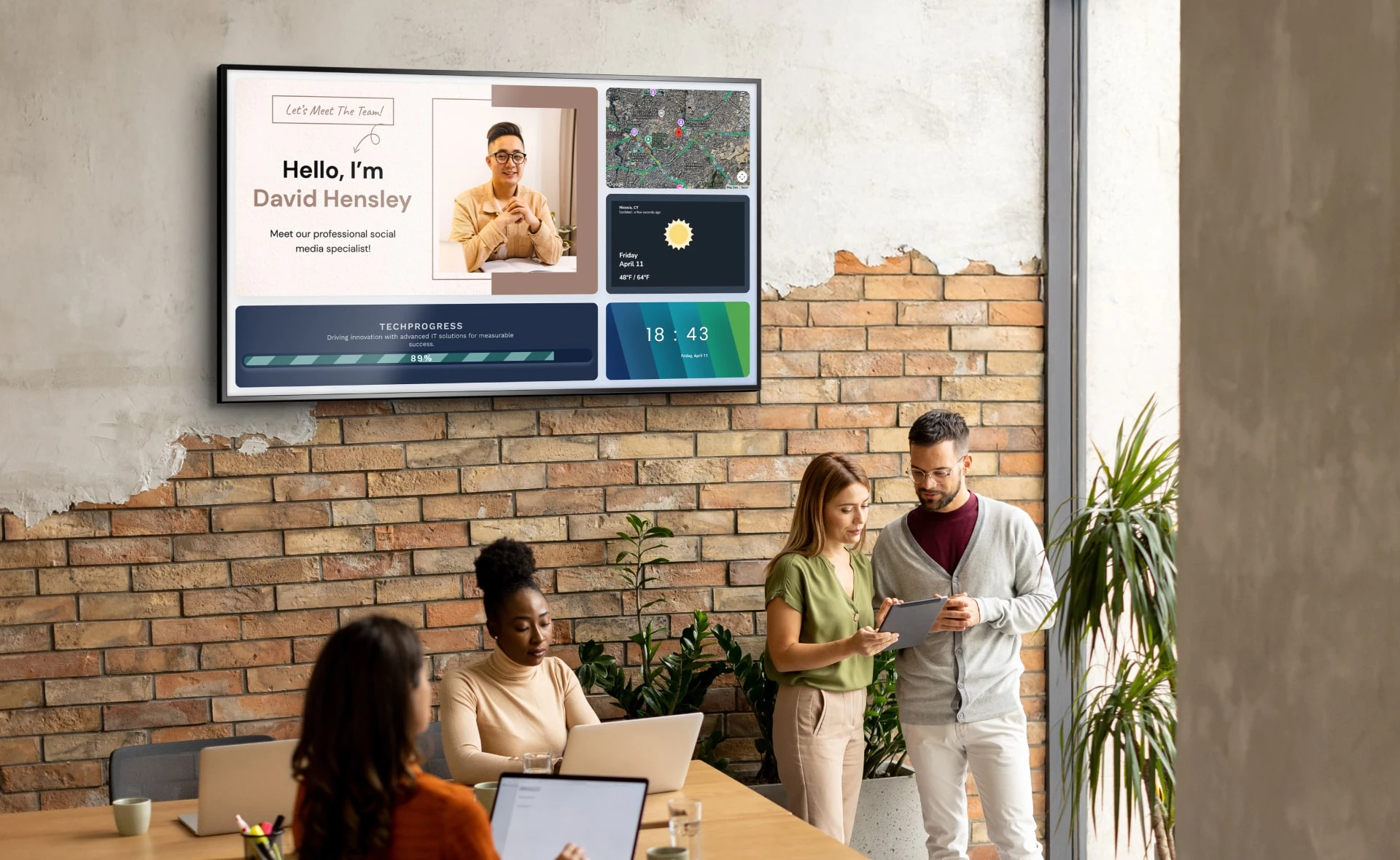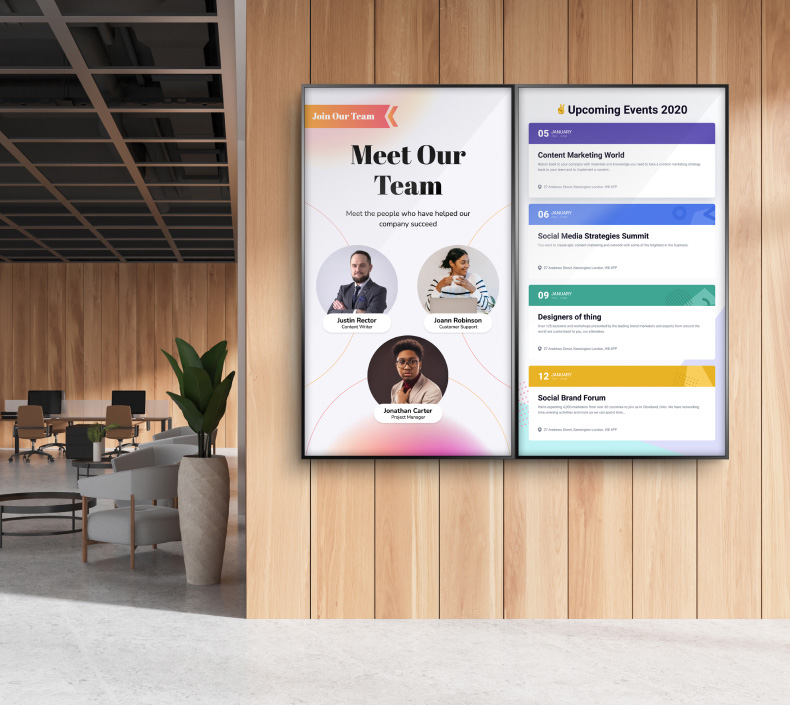Top 5 Industries That Need Interactive Signage
Digital signage is growing, and more specifically, interactive signage. In the past, the term interactive signage referred to a passive activity. Traditionally, marketers would push static content to displays using basic content management software (CMS). On the other end, audiences would only see nothing more than a PowerPoint slide deck.
Fortunately, all that has changed with content and CMS products becoming more evolved. It's not uncommon to see a constant mix of static, animated, and video content. However, it is still passive. That's why marketers and digital signage operators have been looking for a better way to engage viewers.
Fortunately, they have found an effective way to do this. They now allow their audience to use interactive signage that performs better than traditional digital signage. Research shows that 64% of digital signage users cite increased consumer involvement as the key advantage of using interactive signage.
Why Use Interactive Signage?
Touch-enabled digital displays have created a whole new segment of digital signage. They mimic smartphones, mobile devices, and apps that people carry everywhere. So, it's only natural that businesses want to use interactive signage to deliver content similarly to how smartphones behave. Besides, interactive signage has many benefits, such as:
- Better information retention
- Enhanced consumer engagement
- Higher growth, as much as 33%, due to more in-store traffic
- Improved digital connectivity through aggregate social media content
- A central medium for all forms of content
- Allowing your audience to choose the content they want
- Self-check-ins and check-outs
With that said, here's a look at five places to deploy interactive signage for an increased return on investment.
1. Retail Stores
Most retail stores are heavily investing in interactive digital signage to enable them to appeal to their customers more quickly. Besides, they can target specific customers by providing relevant information about the store.
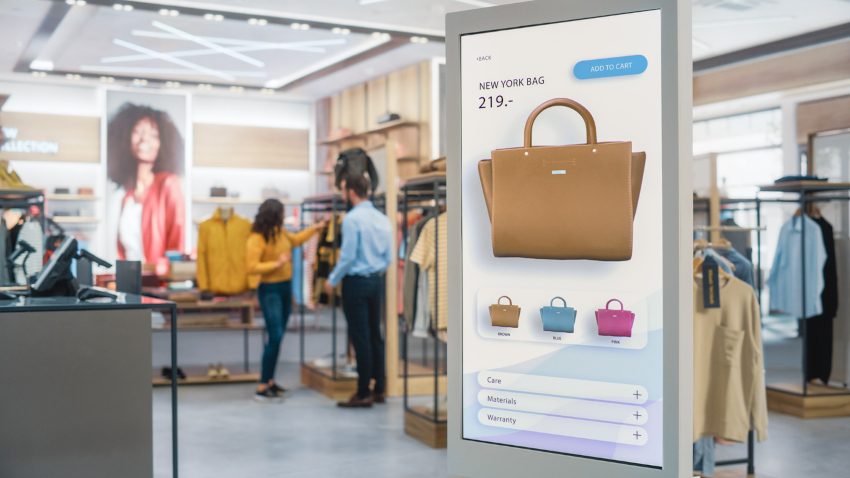
With interactive digital signs, your retail store can achieve the following impact:
- Increased foot traffic for customers who want to find out what your store offers. They can easily find this information on the digital kiosks at the entrance
- More sales and promotions by allowing customers to zoom into different products to see if it's what they want to buy
- Create more brand and product awareness through detailed brand and product descriptions
- Boost customer feedback by allowing users to share their experiences through the interactive digital screens
2. Banks
Think of a bank's ATM screen. It's a form of interactive digital signage, and if you're in the banking sector, you can take advantage of the screens to improve customer engagement and service. Undoubtedly, the old monochrome displays have been overtaken by full-color, high-resolution screens that readily show video and other attention-grabbing content.
Interestingly, the content is a constant reminder of all the bank has to offer, and therefore an effective marketing method until a customer touches the screen to complete a transaction. Similarly, customers can use interactive signage at various points within the bank for multiple purposes. For example, they can use digital signage displays to check the latest interest rates, account prices, and other helpful content in real-time to inform their financial decisions.
3. Government Offices
Visiting government offices is often a nightmare for many people. Most of the time, the places have long queues, confusing hallways, and slow service. Sadly, 80% of government agencies reviewed in a 2018 Customer Experience Index by Forrester received the lowest scores. As such, improving customer service and engagement should be a top priority for state, municipal, and federal agencies across the country.
Interactive digital signage can come in handy to this effect. Some specific government locations that can benefit from the use of interactive signage:
- Billboards outside a courtroom to provide information about courtroom schedules and additional information like the type of hearing and presiding judges
- LCD monitors in hallways to provide information on the range of services available in public offices
- At the entrance of government offices and buildings to help in wayfinding to control traffic. Touchscreen digital directories that allow guests to interact with building layouts can ease traffic, congestion, and confusion among the citizenry
- Government lobbies to enhance queue management and reduce the perceived waiting time by approximately 35%
- Police stations, social security offices, Department of Motor Vehicle centers, and community centers to enhance wayfinding and self-service through interactive digital kiosks
4. Sports Arenas
Sports venues were among the early adopters of digital signage. With Americans spending approximately $56 billion to attend sports events each year, the arenas can significantly benefit from interactive signage solutions. Deploying the solutions in locations with the highest potential for user engagement is an important way of utilizing interactive signage.
Fans can use interactive signage to find information about upcoming events and details about the players. Consequently, overall engagement and excitement can boost sales and retention. With that in mind, some top locations to place interactive digital signage solutions in sports facilities include the following:
- Team shops
- Stadium hallways
- Concession menu boards
- Employee breakrooms
- Office hallways
Sports attendees want to experience the thrill of sports venues in full when they visit these places. So, foot stands, bathrooms, parking areas, and entrances are other places that could benefit from interactive signage in the form of video walls.
5. Restaurants
As digital signage evolves, there's a lot that restaurants can achieve by letting their customers use interactive signage. With the proper placement and strategy, restaurants can discover exceptional marketing benefits while standing out from the competition.

Therefore, here are areas in a restaurant that could benefit from interactive digital signs:
Digital menu kiosks that allow guests to conveniently place their orders to quicken the ordering process and enhance the queue management system. Consider embedding a QR code in the digital menus to enable customers to place orders straight from their mobile phones. They can also pay directly to remove the hassles of ordering their food.
- Waiting rooms where customers place and wait to receive their orders. Installing interactive digital solutions can reduce the perceived wait time by enabling the customers to interact more with your restaurant. For example, you can display your social media platforms and allow customers to interact with the content as they spend time in the restaurant
- Restaurant walls where you display the day's special offers and deals on digital menu boards. Once a discount appears, it can prompt the customers to place more orders by scanning the QR codes on the interactive screens
- Customer service desk to collect reviews and ratings from past customers. The information can enlighten incoming guests on the quality of service they can expect to receive at the restaurant.
Leveraging the Power of Interactive Signage at Various Locations
On average, people spend approximately 13 hours a day on digital screens. Undeniably, it's more interesting to observe information through interactive platforms than static posters or displays. Displaying digital signage content on responsive digital signage will enhance customer engagement.
So, there's every reason to incorporate it into a business' technology solutions. For the best outcome, it's crucial to factor in the science and strategy that will bring the most out of the interactive displays.


